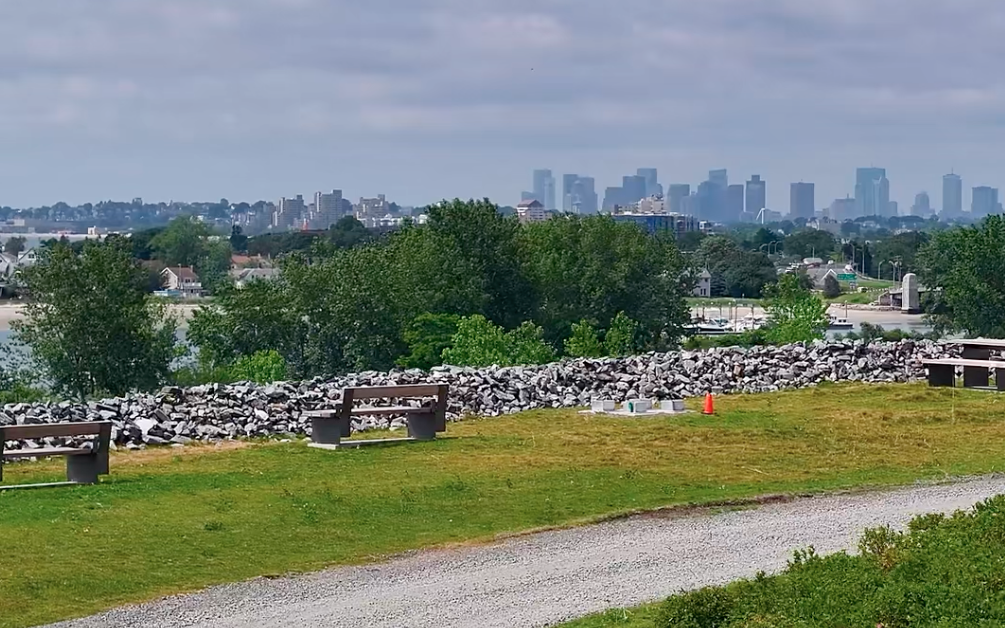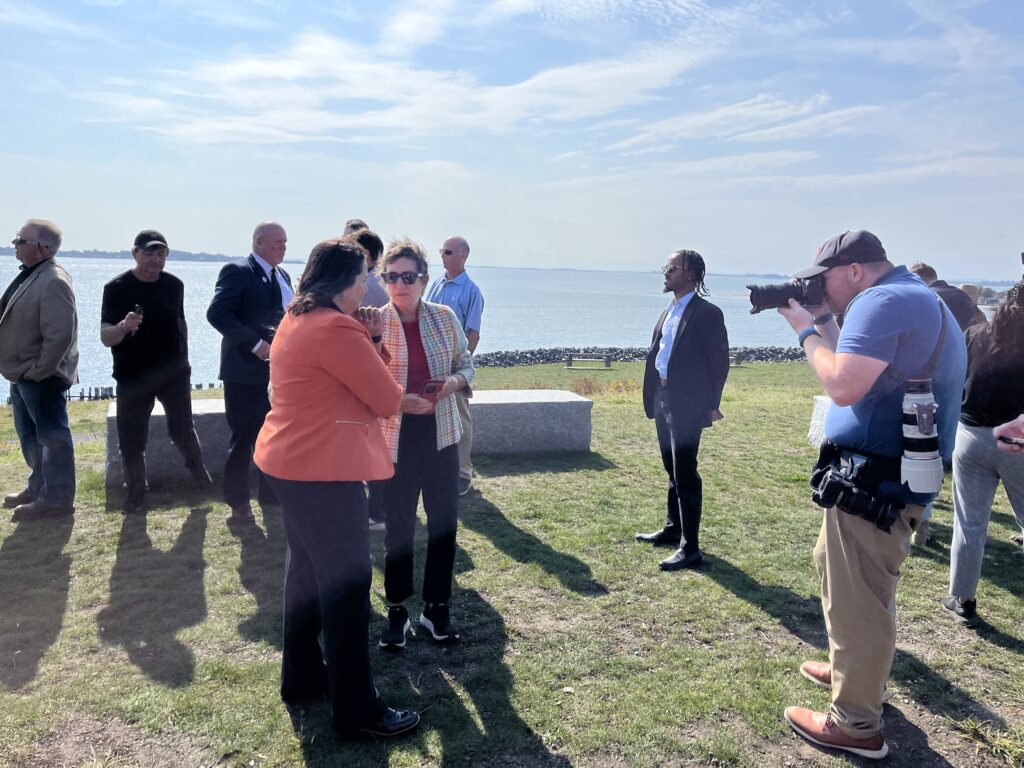Boston Harbor Now was honored to join community leaders, advocates, and partners in celebrating the ribbon cutting of Lynn Harbor Park, a 30-acre public green space that has transformed a former landfill into a resilient coastal park. With sweeping views of the Boston Harbor Islands National and State Park, this project reconnects Lynn residents with their shoreline and sets a powerful example of what’s possible when public access, environmental remediation, and climate resilience are placed at the heart of coastal development.
This milestone reflects decades of advocacy and leadership from local champions, including Bob Delhome, Vice Chair of Boston Harbor Now’s Board of Trustees and CEO of Charter, whose team led the remediation effort that made this park possible. We were proud to celebrate alongside Lynn Mayor Jared Nicholson, Lieutenant Governor Kim Driscoll, MassDEP Commissioner Bonnie Heiple, Undersecretary Stephanie Cooper of the Massachusetts Executive Office of Energy & Environmental Affairs (EEA), State Senator Brendan Crighton, Representative Sean Reid, former Chair of Save the Harbor Save the Bay Joe Newman, and key leaders on the Lynn City Council, whose commitment to creating and protecting public open space helped bring this vision to life.
Lynn Harbor Park stands as a model for the region, showing how former industrial sites can be reclaimed for the public and adapted to meet the challenges of climate change. The transformation echoes the story of Spectacle Island designed by landscape architects, Brown and Rowe. Once a city dump that, through the support of federal, state, and municipal leaders, has become one of the most visited destinations in the Boston Harbor Islands National and State Park. Together, parks like Lynn Harbor Park and Spectacle Island remind us what’s possible when vision, investment, and collaboration meet decisive action. They not only inspire how cities can reimagine land use, they prove that we can transform sites of long disuse into places of belonging, resilience, and joy that serve communities today and will endure as public treasures for generations to come.



Comments